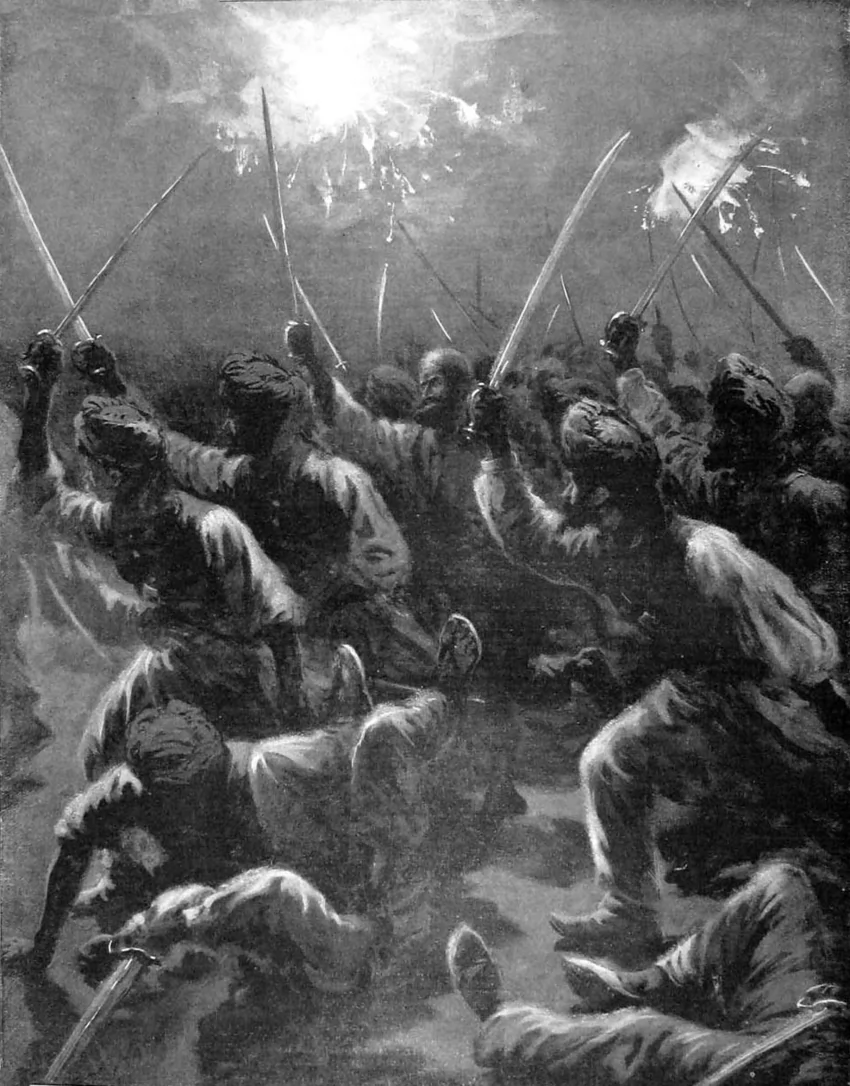The Tarklanri tribe (commonly spelled as Tarkani and Tarkalani) of Bajaur are said to be the descendants of Tarak son of Khashi by his wife Bassu. According to Khulasat ul-Ansab of Hafiz Rahmat Khan (1708–1774): –
“The Tarkalanies originally consist of two khails : (i.) Mahmud, who is known by the name of Momund. Momund again comprises four khails : 1. Sadin; 2. Amedek; 3. Or 4. Gugha. (n.) Sih Saddeh, who comprise three khails : 1. RustamKhail ; 2. Amin Khail; 3. Ismailzyes. Both divisions, the Momunds and Sih Saddehs, have again khails among them; but they are not enumerated, because it would be too long. They all reside in Bajour, between Gond, Kashkar, and the Duabeh.” [1]
In the 15th century, they had accompanied the Yousufzi to Kabul area from Helmand area. When the Yousufzi left Kabul (1480-81), the Tarklanris with their chief Malik Sarkhabi, son of Shamu were settled in Laghman area. [2]
The earliest mention of Tarklanris is in Babur-nama. Babur mentions in his memoirs, mentions one Sher Khan Tarklanri in whose house he had a feast of fresh fish from the fishponds on January 19th, 1520. [3]
Akund Darweza states that the original inhabitants of Lamghan complained of the oppression of the oppression of the Tarklanris, who had overrun their country, to the governor on the part of Mughal rulers (in the reign of Humayun in all probability). An inroad was made upon the Tarklanris, and their lands and properties were plundered, some of them carried off into captivity, and the rest fled for Bajaur, but Yousafzais would not allow them to settle there [4]. Thereupon, they went to Chaghan Sarai in the Kunar valley, but the Turks, Tajiks and Kafirs of that area repulsed them as well, and the tribe was without a home. They then attacked and seized the country of Gagyanis of Bajaur after slaying thousands of Gagyanis on two occasions [5]. The Shoab clan remained behind and is presently settled in Laghman, Sirah Qila and Nanagarhar. Some of their clans, collectively called Katwar, went over to Badakhshan and Chitral.[6]
Bajauris used to carry out incursions into country of Siah-posh Kafirs for the sake of plunder and slaves. About the end of 18th century, the Afghan chiefs of Bajaur, Panjkorah, Kunar and others, confederated together and entered the Kafir country, where they burnt some hamlets and forced several persons to embrace Islam; but the invaders were soon compelled to retreat, after sustaining severe loss. Five or six years since, the Bajaur chief made an inroad into that part of Kafiristan adjoining his own district; burned and sacked some villages, whom he subsequently sold into slavery. [7]
The Tarklanri ‘Khans’ of Bajaur used to have an authority unusual amongst the Pashtuns and were often called Badshah. The author of Hayat-i-Afghani (completed in 1865) describe the Khans of Bajaur as follow: –
“The Khans of Bajour possess an authority unusual among Afghans and are often styled “Kings” (padshah). At present Ghulam Haider Khan of Naugai and Faiz Talab Khan of Jandawal are the paramount chiefs, but Firoz Khan of Barawal, malik Ghulam Khan, Ismailzai, Haider Khan of Nawagi, and Mir Aman Khan of Bajour, are also men of consideration and importance. These khans levy from all those not of Afghan blood who are subject to their sway, a tax equal to one-fifth the produce of unirrigated land and hlaf that of irrigated land, in addition to one fourth the profits of the trade in iron, and from these sources, a gross revenue of perhaps a lakh of rupees will be realised. The Afghan clansmen, though exempt from taxes or dues, are bound to render their khan snit and service, and to attend his summons to war. The khan has also absolute power to punish crime in any way he thinks fit, and may banish, imprison, kill, fine, lay waste on his own authority, but fine is the usual punishment. Nor indeed, is it customary for the khan to intermeddle in petty disputes where there is no fear of serious commotion. Such cases of individual differences are dealt with by the village maliks and grey-beards. ” [8]







References
1- “History of Afghans” by B.Dorn, Vol-II, p-125
2- “History of the Pathans”, Haroon Rashid, Vol.2, p-255
3- “Baburnama”, English translation by A.S.Beveridge, p-424
4- “Notes on Afghanistan”, H.G.Raverty, p-115
5- “The Transformation of Afghan Tribal Society Tribal Expansion, Mughal Imperialism and the Roshaniyya Insurrection, 1450-1600”, p-259
6- “History of the Pathans”, Haroon Rashid, Vol-2, p-256
7- “Notes on Kafiristan”, 1859, by H.G.Raverty
8- “Afghanistan and its inhabitants”, p-130